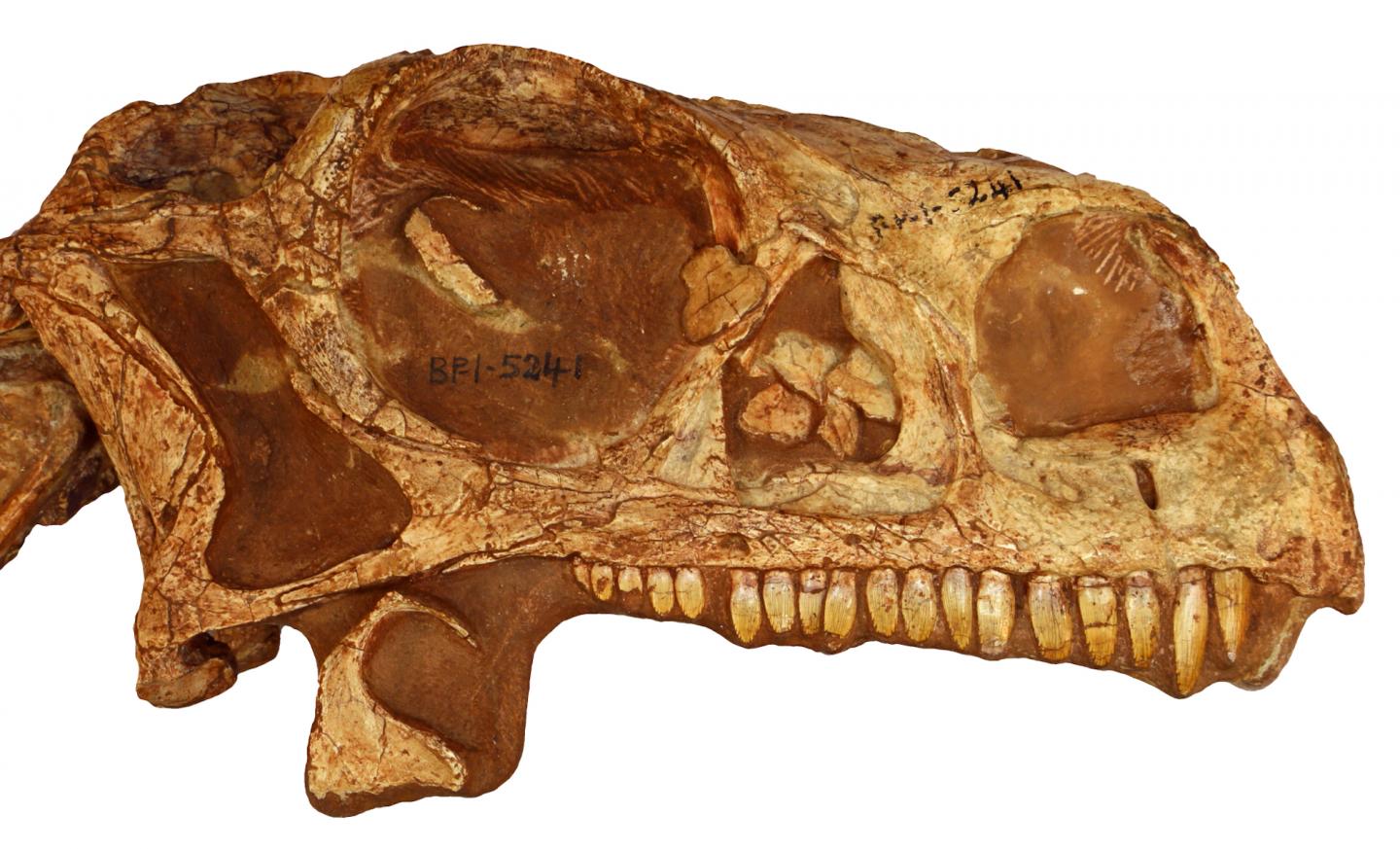Palaeontology at home: You can now 3D print a 200-million-year-old dinosaur fossil in your own home
Palaeontologists were able to digitally reconstruct every bone of the dinosaur's skull.




Palaeontologists successfully digitally reconstructed the skull of a 200-million-year old dinosaur that once roamed around and hunted in what is today South Africa. Kimi Chapelle, a PhD student at the Evolutionary Studies Institute at the University of the Witwatersrand (Wits) in South Africa, along with her colleagues, was able to digitally reconstruct every bone of the dinosaur's skull, allowing her to study even the tiniest of features like nerves.
The digital reconstruction of the dinosaur, Massospondylus, allowed Chapelle to study features like brain nerves and the balance organs of the inner ear. Chapelle's new research paper is open to the public along with a 3D surface file of the skull, both of which are downloadable. This means that researchers as well as palaeontology enthusiasts can now 3D print their very own dinosaur skull.
"This means any researcher or member of the public can print their own Massospondylus skull at home," Chapelle said in a statement. "I was amazed when I started digitally reconstructing Massospondylus' skull, and found all these features that had never been described. It just goes to show that researchers still have a lot to learn about South Africa's dinosaurs."
The 3D reconstruction revealed new details about the dinosaur's features such as how the inner and middle ears connected with each other, the way the nerves connected different parts of the brain and which bones the nerves went through. The new revelations also included details such as the bones in this specific fossil were not completely fused together and more.
"By comparing the inner ear to that of other dinosaurs, we can try and interpret things like how they held their heads and how they moved. You can actually see tiny replacement teeth in the bones of the jaws, showing us that Massospondylus continuously replaced its teeth, like crocodiles do, but unlike humans that can only do it once," said Chapelle. "Also, the fact that the bones of the braincase aren't fully fused means that this particular fossil is that of an individual that is not fully grown yet. This allows us to understand how Massospondylus grew, how fast it grew and how big it could grow."
Hundreds of Massospondylus have been discovered in South Africa. Massospondylus is one of the most famous South African dinosaur species and was named in 1854 by the renowned anatomist Sir Richard Owen.
"I'll be using scans of other specimens to answer new questions," said Chapelle, "for example, how did Massospondylus babies weighing less than 100g grow up to be half-tonne adults?".
"Students like Kimi have been able to use our CT facility to produce cutting-edge research like this" said Prof. Jonah Choiniere, the supervisor and co-author of the study, "and it's changing the way we do dinosaur research."
The new research paper has been published in the open access journal PeerJ.






















